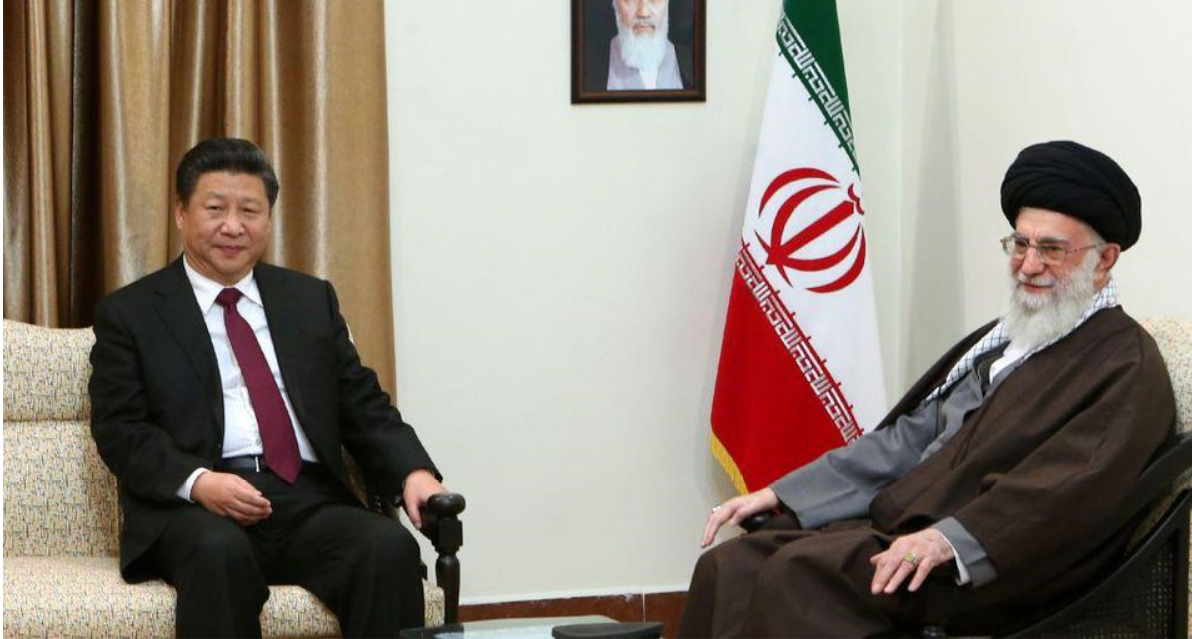
Ariel Cohen – Sep 19, 2019
Secretary of State Mike Pompeo called violent attacks on Saudi oil infrastructure in Abqaiq and Khurais “an act of war,” as evidence suggests that Iran is the culprit. This marks the most dangerous escalation between the U.S. and Iran since the seizure of the American embassy in Tehran. However, this confrontation has major implications for the growing U.S. – China strategic rivalry.
Amidst historic U.S. – Iran tensions, Beijing is doubling-down on its strategic partnership with Tehran, ignoring U.S. efforts to isolate the Islamic Republic from global markets. Following an August visit by Iran Foreign Minister Mohammad Javad Zarif to Beijing, the two countries agreed to update a 25-year program signed in 2016, to include an unprecedented $400 billion of investment in the Iranian economy – sanctions be damned.
The capital injection, which would focus on Iran’s oil and gas sector, would also be distributed across the country’s transportation and manufacturing infrastructure. In return, Chinese firms will maintain the right of the first refusal to participate in any and all petrochemical projects in Iran, including the provision of technology, systems, process ingredients and personnel required to complete such projects. According to an exclusive interview with Petroleum Economist, a senior source in Iran’s petrochemical sector had this to say about the new agreement:
The central pillar of the new deal is that China will invest $280 billion developing Iran’s oil, gas and petrochemicals sectors… there will be another $120 billion investment in upgrading Iran’s transport and manufacturing infrastructure, which again can be front-loaded into the first five-year period and added to in each subsequent period should both parties agree.
This comes at a time when Washington is exerting its so-called ‘maximum pressure’ strategy against Iran, which aims to change its international behavior by bringing oil exports down to zero.
The Trump policy is a 180 degree U-turn form the sanctions relief granted by the previous administration’s Joint Comprehensive Plan of Action (JCPOA). The Obama brainchild intended to temporarily freeze the Iranian nuclear program, but ignored its regional power projection and growing missile arsenal. Under the agreement, Iran’s economy rebounded by over 12% compared to when sanctions were in full force. However, Iran continued to build intermediate and short-range ballistic and cruise missiles and drones, and fund proxies from Lebanon and Syria, to Iraq, to Yemen.
The Trump Administration’s sanctions, however, have cut Iran’s economic growth down to a meager 3.7%. The country’s oil output – the lifeblood of the economy — dropped from almost 4 million barrels per day (mbd) in 2018 to barely above 2.5 mbd in March of this year, and the exports declined to a trickle.
image.png
Nowhere To Run But East
Given Iran’s precarious geopolitical and geo-economic position, it has little choice but to forge a closer relationship with China, despite the country’s reputation as a predatory lender. Russia, too, is a major Iranian partner, weapons and nuclear, rocket, and military technology supplier.
Like the other Eurasian economies involved in China’s massive Belt and Road initiative (BRI), mostly imported Chinese labor will be utilized to build factories, designed and managed by large Chinese manufacturers, with identical specifications to those in China. According to the Middle East Monitor, the agreement also confers “the right to delay the payment of these prices for two years in the Chinese national currency (Yuan).”
This presents an extremely favorable situation for the Chinese, as Beijing earns yuan from its projects across Africa and Central Asia – and therefore does not need to make oil trades in USD, diminishing the bite of sanctions. In return, Tehran gains an additional ally on the UN Security Council, and an economic lifeline with a secure oil and petrochemicals market. The deal facilitates Iran’s quest to become a regional and nuclear-armed hegemon, potentially threatening Europe and the U.S.
Debt-Diplomacy and The Changing World Oil Market
At a time when many nations are becoming more wary of Chinese investment – including companies across Europe, Greenland, and the Central Asian Republics – Iran is further embracing China and less savory actors like Russia, and Turkey.
Overall, this may not prove a financially sound endeavor by Beijing, as Chinese companies will come under U.S. sanctions – but it may end up as a shrewd geostrategic play by both parties. Profitability certainly hasn’t been China’s main motivation in many previous investment schemes, nor is it Iran’s. This case is no different. It is a geopolitical anti-American axis. China’s game here is clear: first, increase tensions between the U.S. and Iran by weakening the impact of American sanctions and increase their soft power leverage in the energy-dense Middle East. Then integrate Iran into the Belt-and-Road initiative and into the Shanghai Cooperation Organization, of which Tehran is an observer member.
Beijing’s gambit to cozy up with a terrorism-sponsoring state, however, may backfire. Iranian aggression is likely to end up in Tehran’s defeat. Regardless of how Saudi Arabia and the United States decide to proceed with retaliation for the Abqaiq-Khurais attacks, China may soon have a severe case of buyer’s remorse.
 khalijefars News, Blogs, Art and Community
khalijefars News, Blogs, Art and Community








